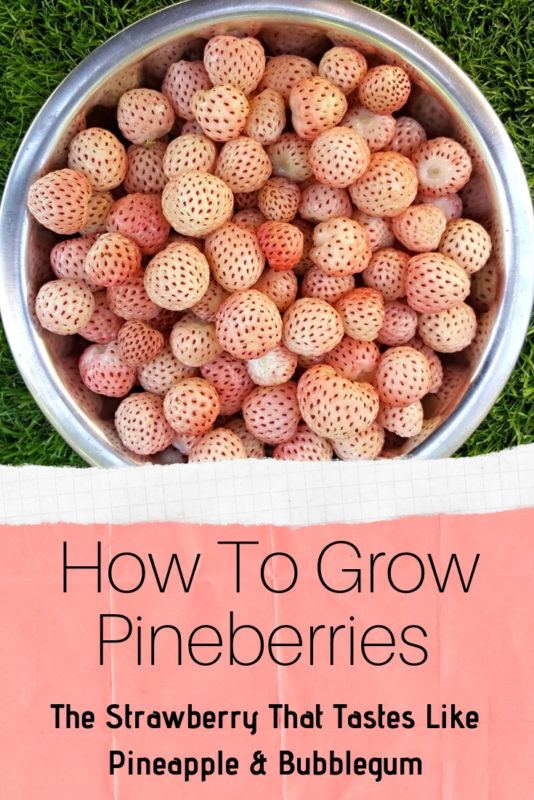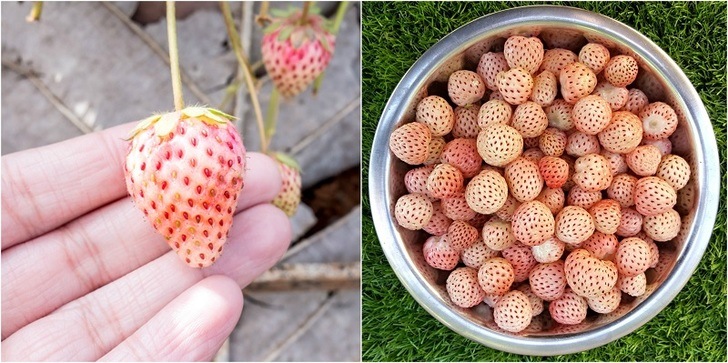
Pineberries are strawberries, but the name comes from their pineapple flavor. They have white flesh and red seeds, just the opposite of regular strawberries.
Pineberries may be a novelty now, but they are actually just an improved version of the original South American strawberry, reintroduced into the market highlighting their pineapple flavor.
To those who are wary of GMOs: neither the color nor the flavor comes from genetic modification. Fragaria chiloensis, the South American strawberries native to Chile, were always white with just a touch of the lightest pink.
Fragaria chiloensis strawberries were one of the original ancestors of the garden strawberries we are all familiar with. They were crossed with the red strawberry species Fragaria virginiana native to North America.
That’s why garden strawberries are referred to as Fragaria x ananassa. The term ananassa probably refers to pineapple flavor of the original species; pineapple is called ananas in most parts of the world.
There are other white strawberries in cultivation, but they are versions of the Alpine strawberry Fragaria vesca. Unlike the pineberries, their seeds are usually white to light green, so you can tell them apart. They are much smaller too.
Pineberries now come from the original Chilean strawberry stocks that still remained with some European breeders. The breeding program started about ten years ago, and it took them about four years to bring this variety into the market.
When first introduced on April Fools’ Day, 2010, they were well received, although most people thought to be a hoax at first. However, despite the public interest in these new entrants, they still remain scarce.
If you want to have pineberries with any regularity, growing your own may be the answer. Planting material is available from select breeders by mail order, and a few nurseries may be stocking them.
You can also purchase pineberry plants when available on Amazon. Stocks are often limited but at time of writing they are available from this page on Amazon with excellent reviews.
If you can get hold of some, it is worth growing, not only for the novelty value but for its distinctly different taste and flavor.
How To Grow Pineberries
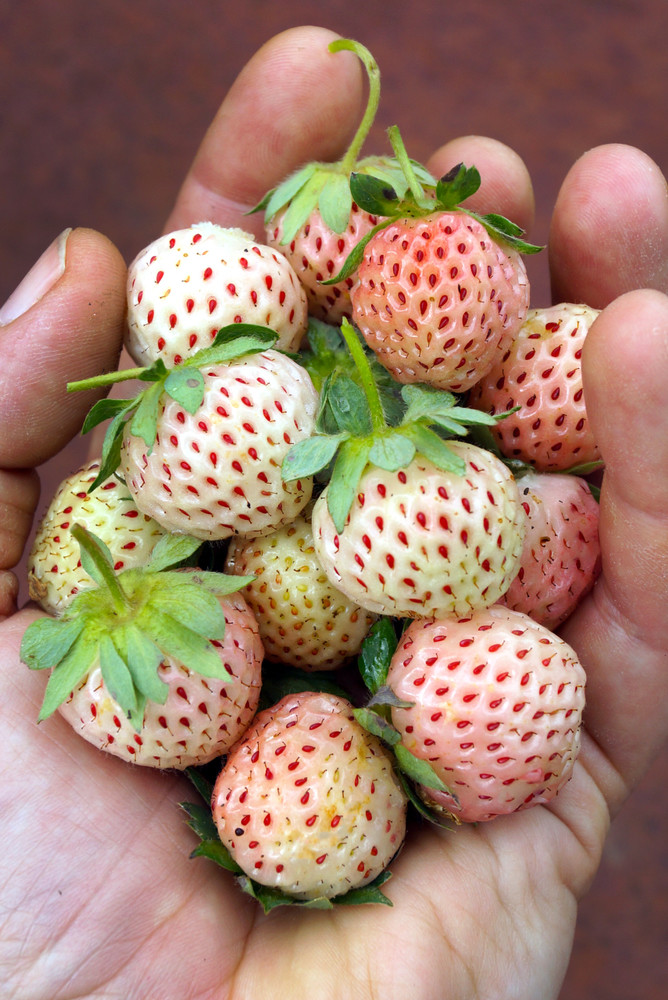
If you have experience growing regular strawberries, pineberry cultivation can be just as easy. However, getting the starts may not be. Many breeders offer branded plants, but there are mainly three varieties to look for: ‘White D,’ ‘White Carolina’ and ‘White Pineberry.’
White D has larger berries compared to the other two, but they are still smaller than your standard red strawberries. They are all more like Alpine strawberries in their growth habits and have their everbearing nature too.
Pineberry starts are priced high, but you have no other option since they may not come true from seeds as many gardeners have found out to their disappointment. You can perhaps buy just 2 or 3 now, and increase your stock by division.
Make sure the plants you order are self-pollinating. Cross pollination with regular strawberries will not change the color or flavor of pineberries, and may, in fact, increase fruit set.
The pineberry starts you get by mail may be quite small and fragile-looking. They are suitable for growing in USDA zones 4-8, but you may have some success in other zones if they are grown in containers and protected from extremes of temperature. Ease them out of the package with care. If you are starting with only a few plants, you may want to plant them in pots.
You can purchase 10 Pineberry White Carolina bare root plants from here on Amazon.
Growing Pineberries In Containers
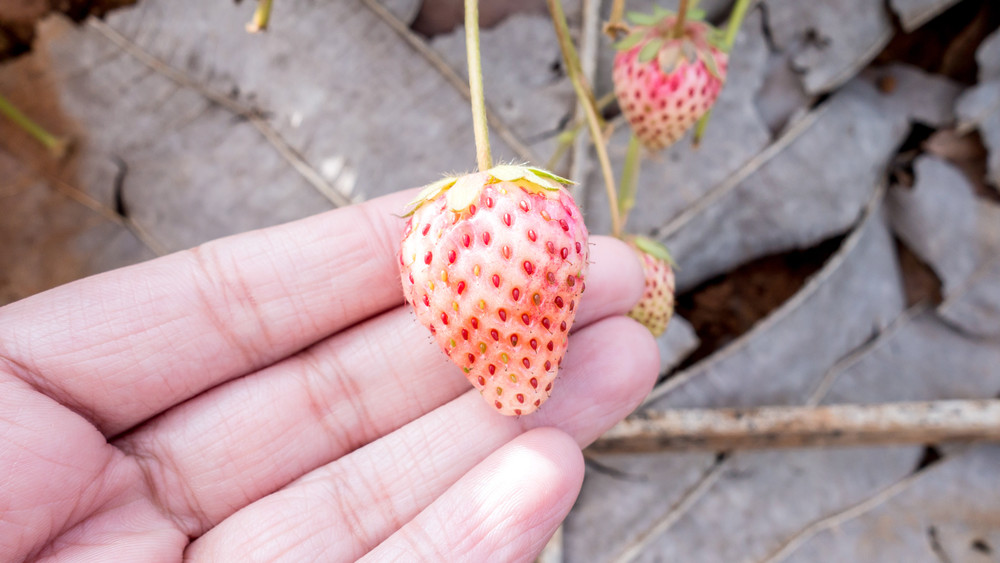
Pineberries can be grown in any container that can hold a quart of soil. They have a small root system, so a 10”-12” pot that is 8” deep would do.
Drainage is the most important consideration. Hanging containers and rain gutters can be used as long as you can provide good drainage. You should be able to check the soil moisture. Although sogginess can kill them, they need sufficient moisture in the soil at all times.
Use a good quality soil mix intended for strawberries to fill the containers. You can also make your own with:
- 10 parts sterile potting soil
- 10 parts peat moss
- 8 parts perlite
- 4 parts compost
- 1 part sand
Combine them all very well to get a uniform mixture. Check the pH of the potting mix. Being woodland plants, pineberries prefer slightly acidic soil. A pH of 5.5 to 6.5 is ideal. Add suitable amendments to bring the pH within the above range.
Hanging containers can be closely planted, with 1 plant to every 6 inches. Keep them in a place that receives 6 hours of direct sunlight or 8-10 hours very bright indirect light. Water the plants before the soil dries out.
Feed with a liquid fertilizer from May onwards to keep the plants in good health throughout the bearing season.
How To Make A Pineberry Patch
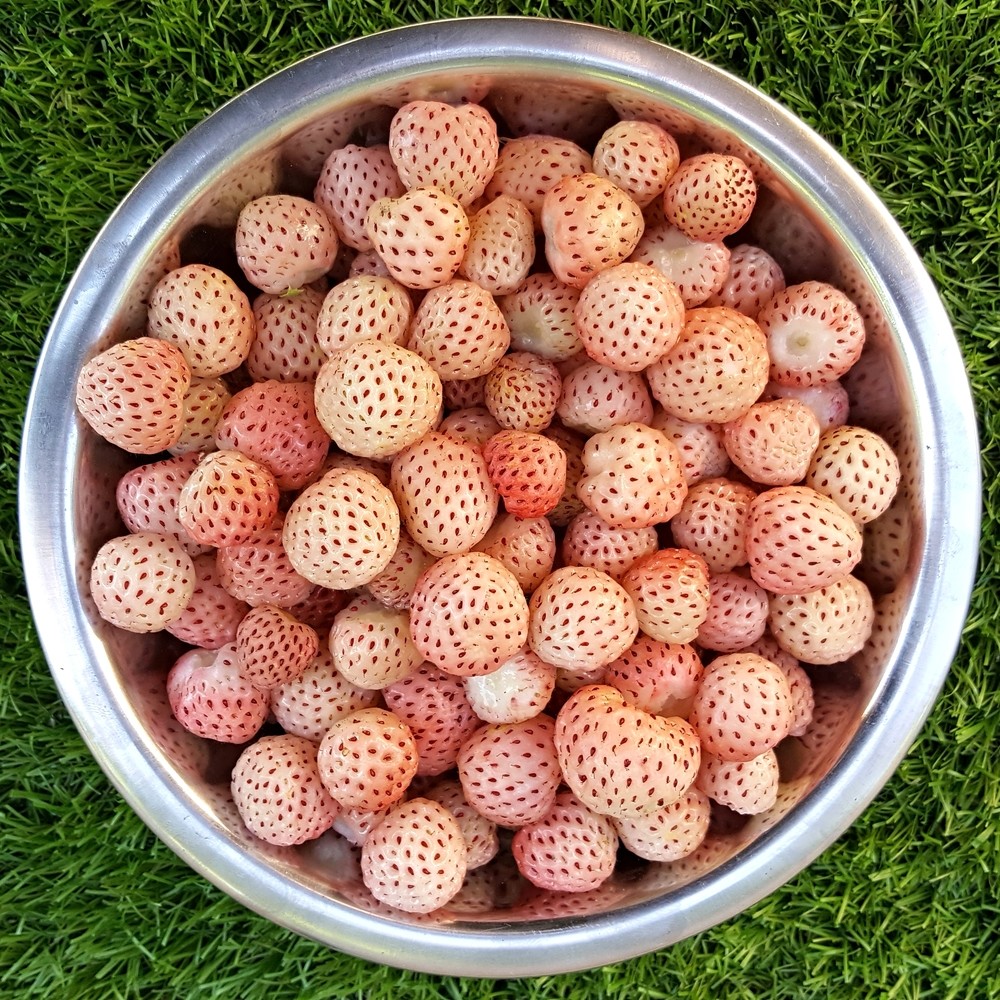
If you intend to have a patch of pineberries, prepare the bed as you normally would for garden strawberries. Choose an area that gets at least 6 hours sun, preferably in the morning. Yields may be higher in areas that get sunlight for 8 hours or more, but pineberries tend to take on a pinkish tint in high-light conditions. That doesn’t spoil their flavor, however.
Avoid beds where you have grown nightshade family plants such as peppers, tomatoes and potatoes before. The fungal spores of Fusarium and Verticillium that affect these plants can lay dormant in the soil for about four years and destroy your pineberry plants. Keep a safe distance from blackberry and raspberry bushes that could transfer common pathogens to your strawberries.
Bed preparation is extremely important for these perennials since they are going to be in the same spot for the next few years. Add some ammonium nitrate and a slow-release organic fertilizer to the soil while preparing the beds.
Good drainage is also important. Amend the soil with plenty of organic matter and sand to improve drainage. If you have poor soil or waterlogging, consider growing them in raised beds rather than trying to amend the soil.
Pineberries need space to spread, but they don’t make as many runners as garden strawberries do. You can plant them closer, one plant every 12 inches.
- Double dig the bed and remove all weeds.
- Add some long-lasting organic manure.
- Make small holes in the bed 12 inches apart.
- Place the pineberry starts in the holes, making sure that their crowns are at soil level, not below.
- Fix them in place and tamp down the soil around them
- Water the plants well.
The starts are ideally set out in spring after the ground has warmed up a bit, but you should shelter them from potential late spring frosts. Spring-planted strawberries may start bearing only the next year. It may even take an extra year to reach maturity.
Fall planting can be considered if you can provide sufficient winter protection. In fact, many growers recommend this as the plants get to establish a good root system before top growth starts. A good amount of mulch should be used to keep the root zone warm.
Pineberries will grow without much trouble if they are kept happy with regular watering and feeding. Give them a liquid feed of high phosphorous, high potassium fertilizer every 3-4 weeks starting from mid-spring to promote flowering and fruit set. Weed the beds as and when required. Don’t allow them to smother the small plants. Check for pests and diseases and take timely actions.
When the flowers start appearing, mulch around the plants to prevent the developing fruit from touching the ground. Pick the berries as they mature; this helps increase production. Since pineberries are everbearers like Alpine strawberries, you may have a long harvest season from late spring to fall.
Cut down on water towards late fall and stop fertilizing. This will toughen up the plants for overwintering. Mulch thickly around the plants but keep them only lightly covered to avoid crown rot.
Ready To Get Started?
Buy your Pineberry plants from this page on Amazon and get started. Alternatively, here are some more exciting fruits you can grow at home.
Pin This To Save For Later
